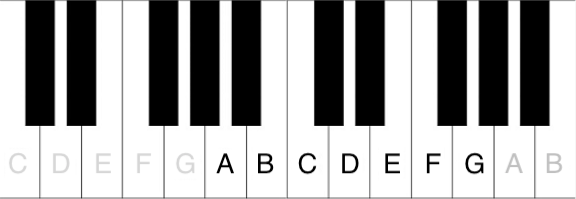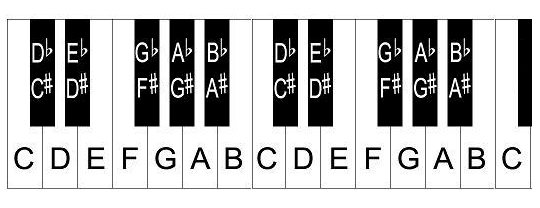If you’re just starting out on the piano and someone mentions “sharps” and “flats,” it might sound a little intimidating—like you’re stepping into some kind of secret musical code. Don’t worry! It’s actually a simple concept once you get the hang of it. This guide will walk you through the basics in plain English, no music theory degree required.
The Basics: Natural Notes
Let’s start with the natural notes—the ones you probably already know by name: A, B, C, D, E, F, and G. On the piano, these are the white keys. Once you get to G, you loop back around to A again. Easy, right?

But here’s the thing: There are 12 notes in each octave, not just 7. So where are the other five? You guessed it—they’re the black keys.
What Are Sharps and Flats?
Think of a sharp (♯) as taking a note and nudging it up just a little bit—specifically, one half step higher. A flat (♭) is the opposite: it brings the note down by one half step.
Let’s use a real-life example. Find the C key on your keyboard (it’s the white key just to the left of a group of two black keys). The black key immediately to the right of C? That’s C sharp (C♯)—one half step higher than C. The black key immediately to the left of D? That’s D flat (D♭)—one half step lower than D.

Here’s the cool part: C♯ and D♭ are the same key! They look and sound identical but have different names depending on the musical context. These are called enharmonic notes—same sound, different name.
Why Do Sharps and Flats Matter?
You might wonder: why not just stick with a C Major scale and just play the white keys? Well, sharps and flats let us play in different keys, build interesting chords, and express different musical moods. They’re how we get from “Twinkle Twinkle” to Beethoven or Adele.
Sometimes, a piece of music will use sharps or flats throughout—that’s where the key signature comes in. Other times, you’ll see a sharp or flat pop up in the middle of a song, just for one note. That’s called an accidental—it means you play that note differently just that one time.
What About Double Sharps and Double Flats?
Most of the time, you’ll just deal with one sharp or flat at a time. But occasionally, especially as you get more advanced, you might see a double sharp (𝄪) or a double flat (𝄫). These raise or lower the note by two half steps (which is the same as one whole step).
For example:
- G double sharp (G𝄪) sounds the same as A.
- B double flat (B𝄫) sounds the same as A.
Why not just call it A? Because in some musical situations, it makes more sense to think of the note as a modified G or B based on the key or chord being used. But don’t stress about this for now—just know it exists and that it makes sense to musicians for structural reasons.
🌟 Quick Recap
- Natural notes = white keys (A to G).
- Sharps (♯) = one half step higher.
- Flats (♭) = one half step lower.
- Black keys = the sharps and flats between most white keys.
- Enharmonic notes = same key, different names (like C♯ and D♭).
- Key signature = tells you which notes are sharp or flat in a piece.
- Accidentals = sharps/flats written in the music just for a moment.
- Double sharps/flats = two half steps higher or lower.
🎵 Final Thought
Learning sharps and flats is like learning shortcuts on a map. Once you know how to read them, the piano becomes a lot more fun—and a lot more colorful. So go ahead, find those black keys, experiment, and don’t be afraid to make a few “wrong” notes along the way. That’s how music gets made.




